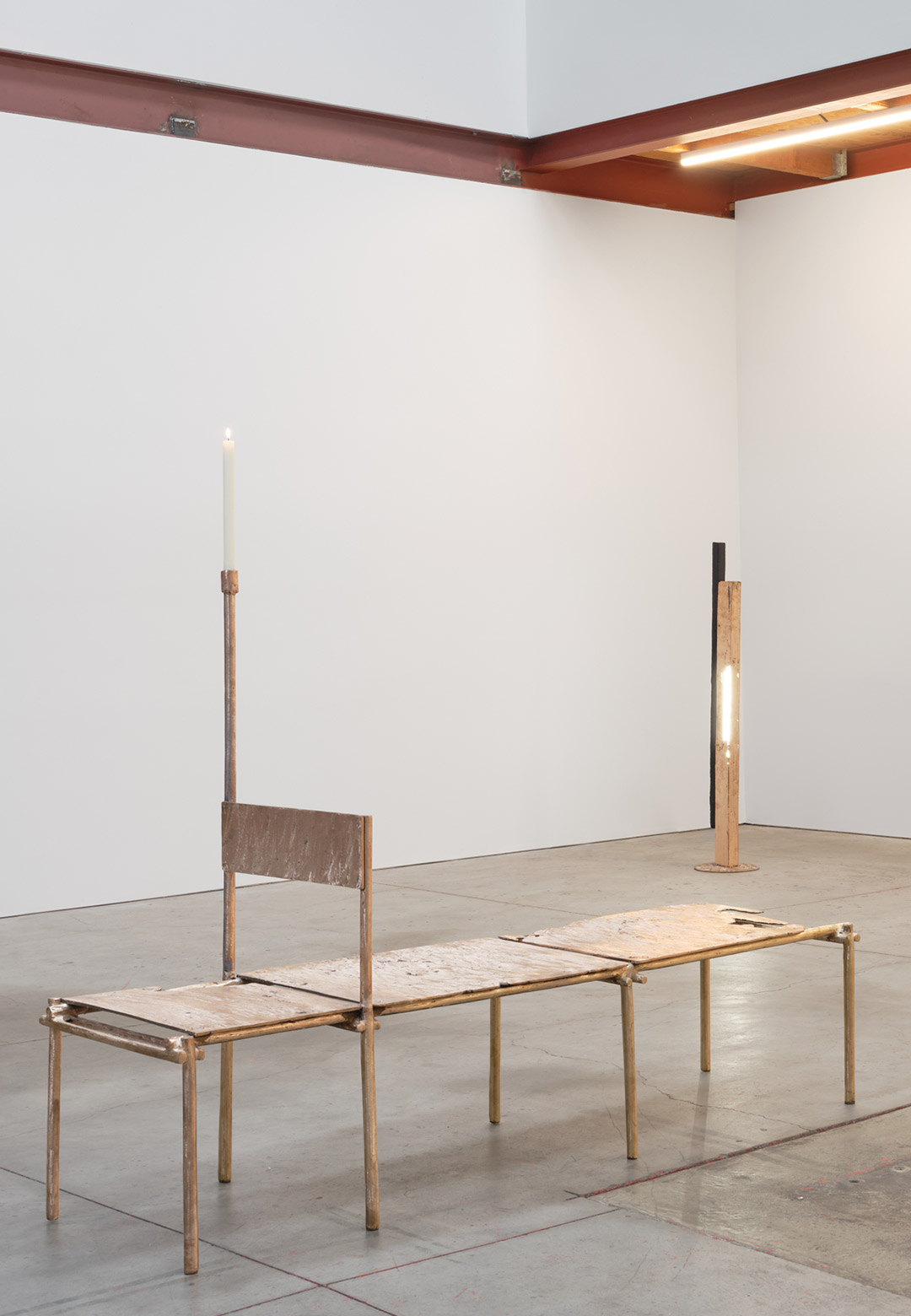Nigeria-based artist and designer Nifemi Marcus-Bello, in his practice and the Oríkì series, addresses the tensions between the ever-growing global demand for resources and the ground realities of scarcity and labour to meet it. The third and final act of the Oríkì series—named after the traditional practice of praise poetry and spoken affirmation of the Yoruba community in West Africa—Oríkì (Act III): Whispers of a Trail, is on view from February 21 – April 5, 2025, at the Marta gallery in Los Angeles, United States. The Marta art gallery provides a platform for artists that experiment with design utility, taking a keen interest in the intersection of art and design, the story of the artists and the process behind their works. It is the furniture designer's third solo exhibition at the gallery, following the design exhibitions Friction Ridge (2023) and Tales by Moonlight (2023) that explored the materiality of bronze and aluminium respectively.
Renowned for his ethnographic and community-centred approach, Marcus-Bello explores scales of manufacturing, availability of production and design anthropology through his works. For Whispers of a Trail, the designer investigates copper, its evolution as a material, and its sourcing and processing techniques. The metal is as elusive as it is abundant in the continent of Africa, subjected to a convoluted, expensive and exhausting cycle. After being extracted, copper is exported from the country for processing and brought back to the continent for sale, exponentially increasing its price. As the tensions rise amid the struggles of sourcing raw copper, the artist focuses his attention on the second-hand metal market in Lagos, where the metal is sold by kilograms in bulk. Liaising with craftsmen and tradespeople, Marcus-Bello, founder of nmbello Studio, procures the material to craft furniture designs such as a daybed, a headrest, a table design and a lighting design.
"As a design studio based in Africa, we have learnt that a lot of humility is required to fully benefit from what the continent has to offer. It is deeply spiritual, in the sense that culturally, Africa is rooted in respect for people and places. There is a strong sense of what is sacred, and we have learnt the same applies [to] design on the continent. We get out what we put into the process. African design, much like African culture requires humility and respect - expect to learn and grow and not dictate what should be," mentions the studio's official website.
The artist, for the very first time, draws on continent-specific historical design to create a collection, as the forms look to Africa's Sotho and Shona communities for conceptual design inspirations. The headrest, which doubles as a stool design, is a significant part of the history and culture of the people on the continent. Crafting a simple, function-driven object, the headrest has a monolithic quality to it that visually separates it from the rest of the Oríkì (Act III): Whispers of a Trail collection.
Almost all the designs in the collection prioritise an elegant silhouette, comprising slender components and basic geometric forms. The artist employs the same foundry workers for the craftsmanship of the daybed, which features legs sand-cast from a single mould. The daybed is combined with a chair design and a tall candlestick, resulting in a hybrid furniture design that incorporates multiple purposes. The Low Table comprises a cylindrical base, upon which an off-centred thin copper tabletop sits as a 'newly-minted penny on concrete'. The Charcoal lamp design is a culmination of slender members of copper and reclaimed American pine wood painted in black, representing the material—ebony wood, which has suffered the same fate in the continent as copper.
Marcus-Bello's works, especially the Oríkì series, focus on all aspects of materiality, its origin, processing and final form, going beyond the conventionally superficial approach towards material exploration. The product designs are not merely utilitarian objects but embody the rich cultural heritage of African communities, their community values and simple lifestyle. Through the collection, the artist aims to highlight the history, economy and people associated with the sourcing and production of the material.






 Sign in with email
Sign in with email










What do you think?